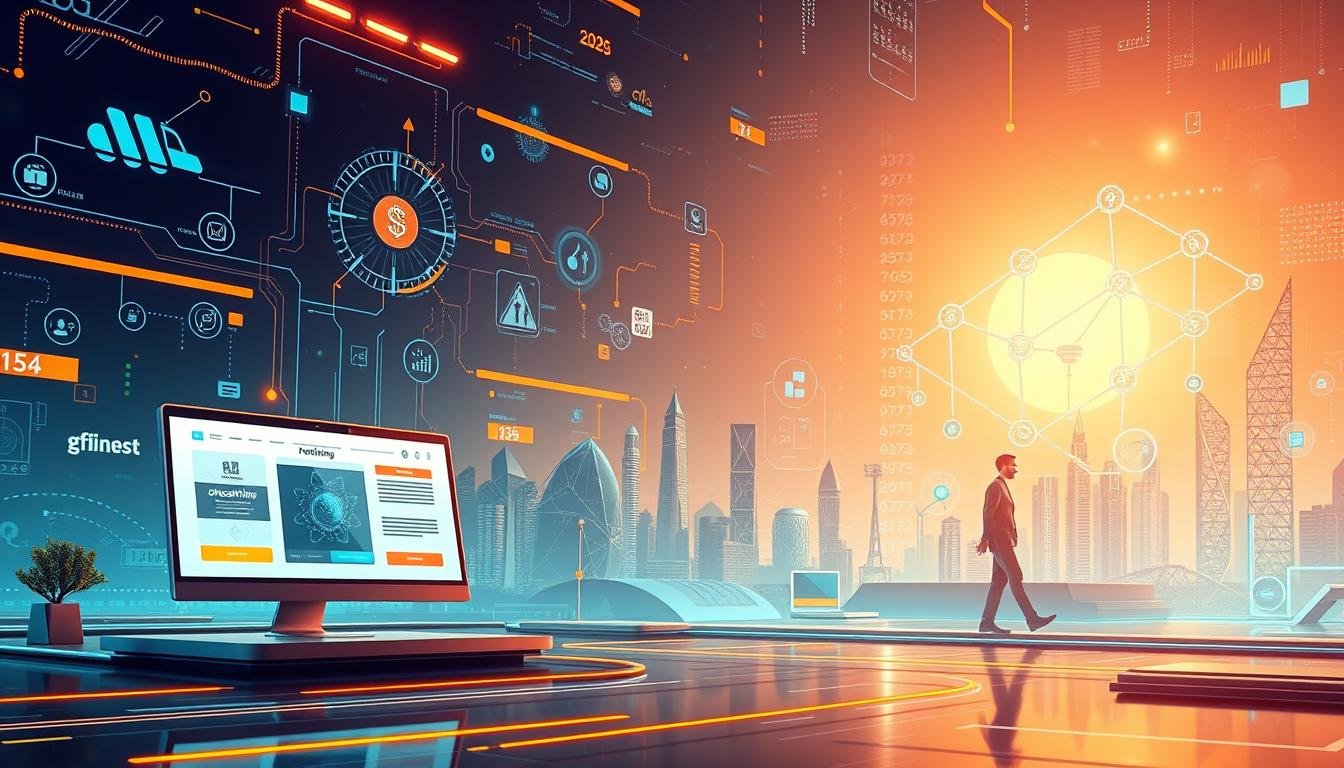How Sustainability Driven Innovation Is Shaping the Future of Business
The business landscape is undergoing a significant transformation as companies increasingly adopt Sustainability Driven Innovation to stay ahead of the curve.
Sustainability is no longer just a buzzword; it’s a driving force behind innovative business practices that prioritize the well-being of both people and the planet.
As the world grapples with the challenges of climate change, environmental degradation, and social inequality, businesses are recognizing the need to rethink their operations and embed sustainability into their core.
By doing so, they not only contribute to a more sustainable future but also reap the benefits of increased efficiency, cost savings, and enhanced brand reputation.
The Evolution of Sustainability in Business
Sustainability has evolved from a peripheral concern to a core business strategy, driven by changing consumer expectations, regulatory pressures, and the need for long-term viability.
This shift is reflected in the transition from corporate social responsibility (CSR) initiatives to a more integrated approach to sustainability.
From Corporate Social Responsibility to Strategic Imperative
Historically, CSR was often seen as a peripheral activity, separate from core business operations. However, sustainability is now recognized as a strategic imperative, driving innovation, reducing costs, and enhancing brand reputation.
- Integration into core business operations
- Driving innovation through sustainable practices
- Enhancing brand reputation through commitment to sustainability
The Triple Bottom Line: People, Planet, Profit
The triple bottom line (TBL) approach emphasizes the importance of people, planet, and profit in business decision-making. This framework encourages companies to adopt practices that promote social equity, environmental stewardship, and economic viability.
- Social equity through fair labor practices and community engagement
- Environmental stewardship through reduced emissions and waste management
- Economic viability through sustainable business models
Understanding Sustainability-Driven Innovation
As companies navigate the complexities of the modern business environment, sustainability-driven innovation emerges as a critical differentiator. This concept is not merely about adopting green technologies or reducing waste; it’s about fundamentally rethinking business models to create long-term value while minimizing environmental impact.
Defining the Concept and Its Business Impact
Sustainability-driven innovation refers to the process of developing new or improved products, services, or processes that significantly reduce environmental footprint while driving business growth. This approach is becoming increasingly important as consumers, investors, and regulatory bodies demand more sustainable practices.
The business impact of sustainability-driven innovation is multifaceted. It can lead to cost savings through reduced energy consumption and waste minimization. Moreover, it can drive revenue growth by appealing to the growing market of environmentally conscious consumers.
Key Drivers Behind the Sustainable Innovation Movement
Several factors are driving the adoption of sustainability-driven innovation. These include:
- Regulatory pressures and incentives
- Investor demands for ESG performance
- Consumer expectations for sustainable products and services
Regulatory Pressures and Incentives
Governments worldwide are implementing policies to encourage sustainable practices. These range from carbon pricing mechanisms to tax incentives for green technologies. Companies must navigate this evolving regulatory landscape to remain compliant and competitive.
Investor Demands for ESG Performance
Investors are increasingly considering Environmental, Social, and Governance (ESG) factors in their investment decisions. Companies that demonstrate strong ESG performance are seen as more attractive investments, as they are perceived to be more sustainable and less risky in the long term.
Market Forces Accelerating Sustainable Business Practices
Market forces are playing a crucial role in accelerating the adoption of sustainable business practices across various industries. The increasing awareness of environmental issues and the demand for eco-friendly products are driving businesses to rethink their strategies and operations.
Evolving Consumer Expectations and Behaviors
Consumers are becoming more environmentally conscious, driving the demand for sustainable products and services. This shift in consumer behavior is forcing businesses to adapt and innovate. Some key trends include:
- Increased demand for eco-friendly packaging
- Preference for products with sustainable sourcing
- Growing interest in circular economy models
Companies that fail to meet these evolving expectations risk losing market share to competitors who are embracing sustainability.
Competitive Advantage Through Sustainability
By adopting sustainable practices, businesses can gain a competitive advantage in the market. Eco-friendly innovation and sustainable product design are becoming key differentiators. Companies like Patagonia and IKEA have successfully leveraged sustainability to enhance their brand reputation and appeal to environmentally conscious consumers.
- Enhanced brand reputation
- Increased customer loyalty
- Access to new markets and opportunities
By embracing sustainability, businesses can not only reduce their environmental impact but also improve their bottom line and stay ahead of the competition.
Transformative Sustainable Business Strategies
In the pursuit of sustainability, businesses are adopting innovative strategies that transform their operations. These strategies not only contribute to environmental conservation but also drive business growth and profitability.
Circular Economy Models
Circular economy models focus on reducing waste and the continuous use of resources. By adopting circular economy practices, businesses can significantly reduce their environmental footprint. This involves designing products for recyclability, reusability, and energy efficiency.
Key benefits include cost savings, reduced waste, and enhanced brand reputation.
Regenerative Business Approaches
Regenerative business approaches go beyond sustainability by aiming to restore and regenerate the environment. This involves adopting practices that improve ecosystems, biodiversity, and natural resources. Companies can achieve this through sustainable sourcing, reforestation, and environmental restoration projects.
- Enhance ecosystem services
- Promote biodiversity
- Support sustainable development
Supply Chain Transformation
Transforming supply chains is crucial for achieving sustainability. This involves assessing and improving supply chain practices to reduce environmental impact. Strategies include sourcing materials sustainably, optimizing logistics, and reducing packaging.
By implementing these transformative sustainable business strategies, companies can not only reduce their environmental impact but also gain a competitive edge in the market. Innovation for sustainability is driving growth, improving brand reputation, and ensuring long-term success.
Green Technology Revolutionizing Industries
The advent of green technology is transforming industries worldwide, paving the way for a more sustainable future. This transformation is driven by the need to reduce environmental impact while maintaining economic viability. Green technology is being integrated into various sectors, revolutionizing the way businesses operate.
Renewable Energy Integration
One of the key areas where green technology is making a significant impact is in renewable energy integration. Industries are shifting from fossil fuels to renewable sources like solar and wind energy, reducing their carbon footprint and reliance on non-renewable resources. This transition not only helps in mitigating climate change but also provides a cost-effective solution in the long run.
Smart Resource Management Systems
Another crucial aspect is the implementation of smart resource management systems. These systems utilize advanced technologies like IoT and AI to optimize resource usage, minimize waste, and improve efficiency. By adopting such systems, businesses can significantly reduce their environmental impact while enhancing their operational productivity.
Sustainable Manufacturing Technologies
Sustainable manufacturing technologies are also playing a vital role in the green technology revolution. These technologies focus on producing goods with minimal environmental impact, using eco-friendly materials, and reducing waste. The adoption of sustainable manufacturing practices is not only beneficial for the environment but also enhances brand reputation and compliance with environmental regulations.
In conclusion, green technology is revolutionizing industries by providing innovative solutions that drive sustainability and reduce environmental impact. As businesses continue to adopt eco-friendly practices and technologies, the future looks promising for a more sustainable and environmentally conscious industrial landscape.
Eco-Friendly Innovation in Product Design
Eco-friendly product design is no longer a niche consideration, but a mainstream imperative driving business innovation. Companies are now focusing on integrating sustainability into their product development processes to meet the growing demand for environmentally responsible products.
Biomimicry and Nature-Inspired Solutions are gaining traction as a design approach. By emulating nature’s patterns and processes, businesses can create innovative, sustainable products. For instance, Velcro was inspired by the sticky properties of burdock seeds.
Biomimicry and Nature-Inspired Solutions
This approach involves studying and imitating nature’s designs to develop sustainable solutions. Examples include materials that mimic the properties of spider silk and surfaces that replicate the self-cleaning properties of lotus leaves.
Cradle-to-Cradle Design Principles
Cradle-to-Cradle design emphasizes the importance of recyclable and reusable materials in product design. This approach encourages companies to design products that can be recycled or upcycled, reducing waste and promoting a circular economy.
Materials Innovation and Alternatives
The quest for sustainable materials is driving innovation in product design. Companies are exploring alternatives to traditional materials, such as bioplastics, recycled metals, and sustainably sourced wood products.
Measuring and Reducing Environmental Impact
As businesses strive to minimize their ecological footprint, measuring and reducing environmental impact has become a critical aspect of corporate sustainability. To achieve this, companies are employing various tools and methodologies to assess their environmental performance accurately.
Key Approaches to Environmental Impact Assessment
Carbon Footprint Assessment Tools
Carbon footprint assessment tools are crucial for businesses to quantify their greenhouse gas emissions. These tools help companies identify areas of high emissions and develop targeted strategies for reduction. Popular carbon footprint assessment tools include:
- Emissions tracking software
- Life cycle assessment (LCA) methodologies
- Carbon accounting frameworks
Life Cycle Analysis in Business Decision-Making
Life Cycle Analysis (LCA) is a comprehensive method used to evaluate the environmental impacts associated with all stages of a product’s life, from raw material extraction to end-of-life disposal or recycling. By applying LCA, businesses can make informed decisions that minimize environmental harm throughout the product lifecycle.
Science-Based Targets and Reporting Standards
Science-Based Targets (SBTs) provide a framework for companies to set emission reduction targets that are aligned with the latest climate science. Coupled with robust reporting standards, SBTs enable businesses to track progress and demonstrate their commitment to environmental stewardship. Key reporting standards include:
- Global Reporting Initiative (GRI)
- Task Force on Climate-related Financial Disclosures (TCFD)
- Sustainability Accounting Standards Board (SASB)
By leveraging these tools and methodologies, businesses can effectively measure and reduce their environmental impact, contributing to a more sustainable future.
Challenges and Barriers to Sustainability-Driven Innovation
The path to sustainable innovation is often hindered by several key barriers. As businesses strive to adopt innovation for sustainability, they encounter various obstacles that can impede their progress.
These challenges can be broadly categorized into three main areas.
Initial Investment Hurdles
One of the primary barriers to sustainable innovation is the high initial investment required. Companies often need to invest heavily in new technologies, processes, and training, which can be a significant financial burden. For instance, transitioning to renewable energy sources or adopting circular economy models may require substantial upfront costs.
- High capital expenditure for new technologies
- Costs associated with process redesign
- Training and development expenses
Organizational Resistance to Change
Another significant challenge is organizational resistance to change. Employees and management may be accustomed to traditional practices and may resist adopting new sustainable business strategies. This resistance can stem from a lack of understanding, fear of job loss, or skepticism about the benefits of sustainable innovation.
- Lack of awareness about the benefits of sustainable practices
- Fear of job insecurity due to process changes
- Cultural inertia within the organization
Technical and Implementation Challenges
Technical and implementation challenges also pose a significant barrier. Integrating new sustainable technologies or processes can be complex and may require significant technical expertise. Moreover, ensuring that these innovations are scalable and effective in the long term can be a daunting task.
Addressing these challenges is crucial for businesses to successfully implement sustainable business strategies and achieve their sustainability goals.
Case Studies: Sustainability Innovation Leaders
The landscape of business is shifting, with sustainability at the forefront of innovation. Companies across the globe are adopting sustainable business strategies, not just as a moral imperative, but as a key driver of growth and competitiveness. This shift is led by various players, from large corporations to innovative startups and purpose-driven B Corps.
Pioneering Large Corporations
Large corporations are setting benchmarks in corporate sustainability. For instance, companies like Unilever and IKEA have integrated sustainability into their core business models, achieving significant reductions in environmental impact while driving growth.
- Unilever’s Sustainable Living Plan aims to halve its environmental footprint.
- IKEA’s commitment to renewable energy and sustainable materials.
Sustainable Startup Success Stories
Startups are also making significant strides in sustainability innovation. Companies like Beyond Meat and Impossible Foods are disrupting traditional industries with sustainable alternatives, capitalizing on the growing demand for eco-friendly products.
- Beyond Meat’s plant-based meat alternatives.
- Impossible Foods’ innovative use of technology for sustainability.
B Corps Leading the Way
B Corps, like Patagonia and REI, are exemplars of purpose-driven business models that balance profit with social and environmental responsibility. These companies are proving that doing good and doing well are not mutually exclusive.
By examining these case studies, businesses can glean valuable insights into effective sustainable business strategies and the potential for sustainability-driven innovation to shape the future of industries.
Future Trends in Sustainability-Driven Innovation Business
Sustainability-driven innovation is revolutionizing the business landscape, paving the way for a more environmentally conscious future. As companies look to the future, they are leveraging emerging technologies to drive sustainable growth.
Emerging Technologies and Approaches
New technologies are transforming the way businesses operate, making them more sustainable and efficient. Some of the key emerging technologies include:
- Artificial intelligence for optimized resource allocation
- Blockchain for transparent supply chain management
- Internet of Things (IoT) for smart energy management
Shifting Business Models and Opportunities
As sustainability becomes a core business imperative, companies are shifting their models to capitalize on new opportunities. This includes:
- Product-as-a-Service (PaaS) models that promote sharing and reduce waste
- Circular economy business models that design out waste and pollution
- Sustainable supply chain practices that ensure ethical sourcing
By embracing these trends, businesses can not only reduce their environmental impact but also drive growth and profitability.
Conclusion: The Sustainable Business Advantage
As businesses navigate the complexities of the modern commercial landscape, embracing sustainability-driven innovation has emerged as a critical factor for long-term success. By adopting sustainable business strategies, companies can not only reduce their environmental footprint but also drive growth, enhance brand reputation, and foster resilience in an increasingly eco-conscious market.
The integration of sustainable practices into core business operations enables organizations to achieve significant environmental impact reduction while unlocking new opportunities for innovation and competitiveness. As highlighted throughout this article, the journey towards sustainability involves a multifaceted approach, from transforming business models and supply chains to leveraging green technologies and eco-friendly product design.
Ultimately, the sustainable business advantage is not just about mitigating risks; it’s about seizing the opportunities that sustainability presents. By prioritizing sustainability, businesses can drive meaningful change, contribute to a more equitable and sustainable future, and secure a competitive edge in the market.
FAQ
1. What is sustainability-driven innovation, and why is it important for businesses?
Sustainability-driven innovation refers to the process of developing new or improved products, services, or processes that reduce environmental impact while driving business growth. It’s crucial for businesses as it enables them to stay competitive, comply with regulations, and meet evolving consumer expectations.
2. How can businesses implement sustainable practices without incurring high costs?
Businesses can implement sustainable practices by adopting circular economy models, reducing waste, and improving energy efficiency. Many of these strategies can lead to cost savings and improved profitability over time. Companies like Patagonia and IKEA have successfully integrated sustainable practices into their operations.
3. What role do consumers play in driving sustainability-driven innovation?
Consumers play a significant role in driving sustainability-driven innovation by demanding more sustainable products and services. Their preferences influence businesses to adopt eco-friendly practices and develop sustainable products, thereby driving the growth of the sustainable innovation movement.
4. How can green technology contribute to reducing environmental impact?
Green technology can significantly reduce environmental impact by enabling the efficient use of resources, reducing waste, and promoting the use of renewable energy. Technologies such as solar energy, smart grids, and sustainable manufacturing processes are revolutionizing industries and contributing to a more sustainable future.
5. What are some examples of eco-friendly innovation in product design?
Examples of eco-friendly innovation in product design include biomimicry, where products are designed inspired by nature, and cradle-to-cradle design, which ensures products are recyclable or reusable. Companies like Tesla and Seventh Generation are pioneering eco-friendly product design.
6. How can businesses measure their environmental impact and track progress towards sustainability goals?
Businesses can measure their environmental impact using tools such as carbon footprint assessment, life cycle analysis, and science-based targets. These methodologies help companies understand their environmental footprint, set realistic sustainability goals, and track progress over time.
6. What are the key challenges businesses face when implementing sustainable innovation, and how can they be addressed?
Key challenges include initial investment hurdles, organizational resistance to change, and technical challenges. To overcome these, businesses can develop a clear sustainability strategy, invest in employee training, and collaborate with external partners to leverage their expertise and resources.
7. How can companies balance the need for sustainability with the pressure to maintain profitability?
Companies can balance sustainability with profitability by integrating sustainable practices into their core business strategy. This can involve adopting cost-saving sustainable practices, developing premium sustainable products, and engaging in transparent sustainability reporting to build trust with stakeholders.












мостбет скачать андроид мостбет скачать андроид .
мостбет казино https://www.mostbet6013.ru .